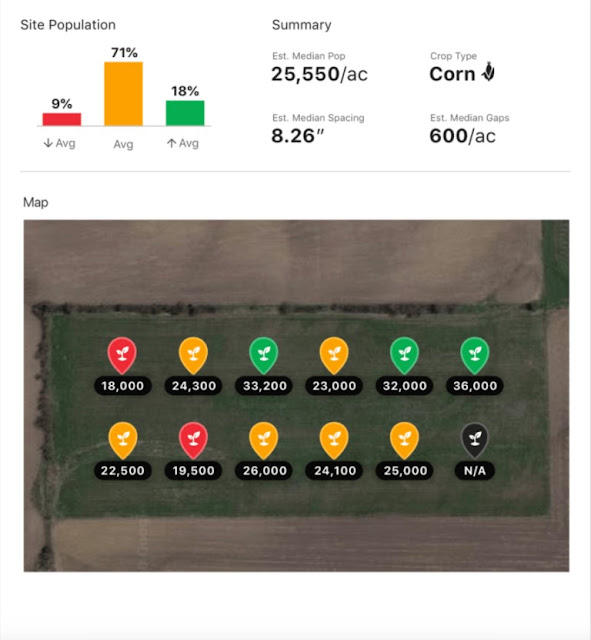53 points on 83% FG shooting, 32 rebounds, 14
assists, 11 steals, and 24 block shots
Officially, there has never been a quintuple
double achieved in the NBA nor ABA. Heck,
it’s even been over 25 years since the last quadruple double was recorded
(David Robinson – February 1994) and there has only been five such occurrences
of a quadruple double in all of NBA history (none in the ABA) – Nate Thurmond
(October ’74), Alvin Robertson (February ’86), Hakeem Olajuwon (twice in March
of 1990), and then Robinson’s in ‘94.
The official statistics collected on steals and blocked shots did not
begin to occur in the NBA until the 1973-’74 season. The ABA started their league in the autumn of
1967 and always did have the two stat categories in their official bookkeeping.
However, during the 1960’s and early 70’s in
the NBA, it was common during games for the play-by-play announcer or newspaper
journalist in attendance to keep a running tally of blocked shots and steals to
help describe the game. At the time, the
official game scorer or statistician kept record only on the traditional
categories: points, rebounds, assists, personal fouls, shot attempts (with
makes) and playing time. Since it was
the era of the big dominating centers like Bill Russel, Wilt Chamberlain, Walt
Bellamy, Nate Thurmond, and even the early days of Kareem Abdul-Jabbar, blocked
shots began to obtain significant air time with the play-by-play announcers
(and/or writers) as they used it to help differentiate the big man play. The significant All-Star backcourt players at
the time of Oscar Robertson, Rick Berry, Jerry West, Sam Jones, and Elgin
Baylor created a significant amount of opposing player turnovers and thus
announcers/writers found the category of steals valuable to help communicate
the talent and impactful influence of the smaller players on the court.
This brings us to March 18, 1968 and a
Philadelphia 76ers 158 to 128 win over the Los Angeles Lakers. Officially, Wilt Chamberlain’s performance in
leading his team to a fairly easy win at home was recorded as 53 points on (24
of 29 field goals – 82.8%), 32 rebounds, and 14 assists for a monster triple
double on 48 minutes (full game) of playing time. Unofficially, Wilt is said to also have
collected 11 steals and 24 blocked shots in this same game. Add it all together and it’s a quintuple
double! And, most would agree that it is
one insane single game performance.
https://fadeawayworld.net/2020/04/01/wilt-chamberlain-reportedly... https://www.basketball-reference.com/boxscores/196803180PHI.html
It would be very interesting to witness how
Wilt Chamberlain would be perceived throughout history if steals and blocked
shots were recorded during his entire playing career (probably even more
valuable would have been video footage of his games – it is estimated that only
1-2% of Wilt’s performances have video).
Mr. Chamberlain holds numerous single game, single season, and career
statistical records, including the most points in a single game (100), most
rebounds in a single game (55), and never fouling-out of a contest in his
career. After he was criticized in the
press for being too one-dimensional in the summer of ‘67, Wilt responded with
his play on the court. He concluded the
1967-68 season by winning his third straight and final league MVP award (4th
total) with tops in FG% (60%), total assists (702), rebounds (23.8/game), and
playing time (46.8 min/game)!
https://www.basketball-reference.com/players/c/chambwi01.html
What type of statistics do you keep track of
in your farm business? The ag-professionals
say we should track at minimum our cost of production per bushel (or 100 weight
or ton) in each crop, input costs per acre, field by field profitability, and
if we’re doing some variable rate applications, a zone cost analysis versus a
whole field or lump sum acre analysis.
The financial partners will desire evaluating more dynamic stats like working
capital, debt to asset ratio, return on assets, liquidity ratio, etc. Every farm manager will see more value in
certain financial numbers over others. At
the end of the day, the important thing is the consistent work being done to
keep all the business stakeholders informed so the ship stays pointed in the
right direction. Good luck!
Regional Weather
It should be a week of melting
and thawing conditions as most days are forecasted for high temps in the 40’s. Combine those temperatures with the relatively
light snow pack, and we should see very minimal snow in the fields after the
first week in March. These conditions
create very “lamb” like conditions for the first part of March. We’ll see if the lion rears its ugly head at
the end of the month!
I’ll count on your weather app
for the best guidance through the 7-8 day forecast, but looking beyond that,
I’ve found this site from National Oceanic Atmospheric Association (NOAA) to be
fairly reliable for a general 8-14 day outlook (next week).
https://www.cpc.ncep.noaa.gov/products/predictions/814day/index.php
For the second full week of March,
the forecast is to have greater potential for above average temperatures. Regarding the precipitation chances, they are
split as we go from east to west in our region - above average chances to the east
and below average chances to the west.
The NOAA
organization also provides three month outlooks. If we would like to get a general forecast
for the latter half of the upcoming spring season (April-May-June), it can be
seen here:
https://www.cpc.ncep.noaa.gov/products/predictions/long_range/seasonal.php?lead=2
This forecast
currently predicts above average chances on the temperature potential, along
with equal chances for precipitation in our region. Overall, if that holds true, we would welcome
the developments and hope to see a drift towards enhanced chances of
precipitation for the crops.
There is always risk of failure. Even though market prices are much stronger
currently then we have seen in the past several years, there is still work
remaining to build back additional equity into our businesses. Farm Progress had a good article reminding
farm managers to stay diligent at working on the business to faster achieve
your goals. A few good reminders:
·
Borrow and invest in things that have a strong
return on investment. If you have an
expensive hobby – you should play in that space with disposable cash
·
Continue to prioritize and implement your marketing
plan or strategy – these actions should have even greater rewards with
profitable commodity markets
·
Communication remains key. Work to keep all business partners on the
same page and the communication open.
Nothing breaks down a business more quickly than lack of communication
which quickly and easily moves to a lack of trust
·
Continue to have a reasonable, realistic, and
budgeted family living expense
·
Avoid spending large sums of money to completely
avoid taxes. Remember the old saying,
“nobody goes broke paying taxes”
·
Continue focusing on building a strong farm
business team – employees, business partners, family, outside business
relationships, etc.
https://www.farmprogress.com/commentary/why-farms-fail-even-good-times?...
Farm Inheritance and Estate Planning
It’s difficult to expand on this topic much as each farm operation is different in how they are planning on passing down the farm business to the next generation. However, I thought it was interesting to note that discussions are occurring at the federal level in basis point calculations. Stay in touch with your financial planner and/or tax accountant on how things are developing on this topic. Finding avenues through local connections on how you can potentially have your voice heard among the federal law makers is also a worthy investment of time.
Spring Wheat
Herbicide Options from Corteva®
For those of you with TruChoice™ dollars committed – thank you. I know many of you are on the ball and already have a plan placed together on where specifically you will spend those dollars. Others maybe shooting from the hip, so let’s review a couple simple, cost-effective, and solid weed killing solutions in the spring wheat crop for our TruChoice™ commitment.
WideARmatch™ – This pre-mix of Arylex™ active (halauxifen-methyl), Stinger™ (copyralid), and Starane™ (fluroxypyr), should be a big hit for growers in our region to provide some strong broadleaf control as well as keep us open for crop rotation flexibility. WideARmatch™ tank-mixed with 2.4-D will control all of our tough broadleaf weeds including – waterhemp, common lambsquarter, ragweed, and kochia. WideARmatch™ alone can be applied from 2-leaf to flag leaf emerged, but the 2.4-D will restrict application from full tiller to before jointing. If grass weed (wild oat and/or green/yellow foxtail) control is desired, tank-mix with Puma® or Axial®.
Pixxaro™ EC – If you are a little leery
of Stinger carryover into the following year’s crop of soybeans or dry beans
under drier conditions, you could move to Pixxaro™ EC. Pixxaro™ EC is a premix of Arylex™ active and
Starane®.
Bayer®
is bringing out Huskie® FX which adds Starane® to their mix. However, be a little concerned as they are
only adding a 2.9 oz/ac rate of Starane® in their Huskie® FX jug while Corteva®
brings a 5.0 to 5.1 oz/ac rate of Starane® in Pixxaro® EC and WideARmatch®
respectively.
Product Spotlight: DroneDeploy’s Stand Assessment Software
DroneDeploy continues their march ahead to
maintain a leading edge as one of the world’s top software companies for
generating impactful data with drones or UAVs (unmanned aerial vehicles). Agriculture is a significant part of
DroneDeploy’s business, and thus they have recently announced bringing
capabilities to farms globally for assessing early crop stands (or plant
establishment). The announced
collaboration with Corteva Agriscience (developers of the Artificial
Intelligence software for crop establishment) will bring whole field stand
assessments to farm managers, consultants and other partners who see value in
accurately assessing whole fields for early performance of a crop and the
corresponding genetics.
Corteva has one of the world’s largest agricultural
UAV fleets with over 600 drones and is a very significant annual contributor to
DroneDeploy’s agricultural mapping volume (55 mil acres mapped in 2020 for
DroneDeploy). If you should have
concerns next spring with your stand establishment and contemplating replant,
please reach-out to discuss and we’ll make time to fly our drone(s) across your
fields. If you have a drone and are
looking for software to help make more impactful use out of it across the farm,
please visit the DroneDeploy website below.
https://www.dronedeploy.com/solutions/agriculture/ http://news.agropages.com/News/NewsDetail---38050.htm
China Continues with Strong Corn Import Volumes
China’s demand for corn remains robust as the
country is trying to rebuild its grain stock reserves amid high domestic prices
and growth in animal feed consumption.
S&P Global Platts Analytics estimates China to have a 30 mil MT
(1.18 bil bu) “structural deficit” for corn in the current marketing year due
to their high demand. In the 2019-20
marketing year, China only imported 7.6 mil MT of US corn and it is forecasted
that the current marketing year will see a 3 to 4-fold increase.
https://www.spglobal.com/...chinas-buying-to-keep-us-corn-prices...
Glufosinate Resistance Confirmed
We knew it would happen sooner or later, and
now it’s here – glufosinate (Liberty™) weed resistance in a major US broadacre
weed species. It comes as no surprise
that Palmer Amaranth is the villain.
University of Arkansas Extension weed
scientists have confirmed glufosinate resistance in a couple different Palmer
amaranth populations in the northeast part of the state. With glyphosate resistance first confirmed
about a dozen years ago in the area, many farm producers have shifted to an
over-reliance on glufosinate to control P. amaranath. Last summer, dicamba resistant P. amaranth
was confirmed just to the west of Arkansas in the neighboring state of
Tennessee.
Weed scientists in the delta region realize
the consistent battle they are involved in to effectively control weeds such as
Palmer amaranth and waterhemp. Long-term
intensive integrated management practices are being coached to area farm
managers to help extend the herbicide resource.
Outside the box tactics entail everything from cover crops to
hand-weeding to harvest weed seed control.
These management tactics are being employed to minimize the genetic
selection pressure on herbicides and to keep the weeds sensitive to remaining
control strategies.
Our more diverse crop rotations in the far
northern regions of the US do help us naturally fight the weed resistance
battle, but I’m sure we will see our battles become more intense as weeds
continue to evolve under only herbicide pressure. If you would like to evaluate some IWM
tactics this coming summer in your overall weed management program, please
contact me for a brainstorming discussion.
Being proactive today will place your farm in a good spot for the
future.
https://www.dtnpf.com/...2021/02/17/glufosinate-resistant-palmer
Enlist™ Training
For those farms with only Enlist™ soybean acres, you do not have any additional mandatory pesticide training for the winter. However, if you have liked the timely reminders on the key aspects of pesticide application, and/or see the need for some added training for your new and returning employees, here is a comprehensive online site for enhanced Enlist™ training:
https://enlist360training.bader-rutter.com/#/
Product Spotlight (2): P8431AM
The next product in our series of new Pioneer corn genetics for the spring is P8431AM. It’s medium to tall for plant height at 84 RM (relative maturity) with above average trait characteristics for brittle-snap tolerance and Goss’s Wilt.
For
a quick review, Pioneer rates their products on a 1-9 scale with 9 being the
best/strongest/tallest. Average
characteristic performance scores are rated with 4’s and 5’s; below average is
3, and above average strength would rate 6 to 7. It is fairly rare to see an advanced product
with a score of 8, but it does happen.
Most all products that would rate below a 3 on any given single
agronomic score would not make it through the process to become a commercially
available product.
Overall,
P8431AM’s strength will be yield for maturity as it is competing very well
against other hybrids in the industry for the mid-80 RM zone. We may see a bit of late season standability
issues with a root score of “4”, but late season root lodging typically only
occurs when conditions are very wet in mid-August and later (every hybrid has a
weakness somewhere). Most of the other
traits for this particular hybrid rate adequate/acceptable, so it’ll be
interesting to see how this hybrid performs across the variable conditions in
the 2021 growing season.
We’ll
have a few units of P8431AM available this spring, so please reach-out to
myself and/or your local Pioneer agent if you would like to see the hybrid on
your farm this spring.
Random
Agricultural Facts – Fertilizer History
The FarmDoc Daily out of the
University of Illinois recently had an interesting article on the history of
synthetic nitrogen in the USA. Lewis B.
Nelson also authored a book in 1990 on the topic. I don’t have a link or copy of Nelson’s book,
but here is FarmDoc’s article:
https://farmdocdaily.illinois.edu/2021/02/synthetic-nitrogen-fertilizer...
The first agriculture sales of
commercial fertilizer in the US occurred around 1840 and these specific sales
lasted for approximately 30 years. Any
guesses to the product? …Have you ever heard (or remember) the term, guano? Guano is basically bird manure and the
primary deposits of guano harvested for fertilizer supply across the world at
the time came from the west coast of South America in Peru and Chile. However, the guano was a finite supply and transporting
it in large volumes was a continuous challenge both logistically and with
concerns to human health (anyone who has ever shoveled-out a chicken coop would
know the hazard!). Other early sources
of commercial fertilizer used
globally included bones, fish scraps, slaughterhouse waste, wood ashes, sodium
nitrate, ammonium sulfate from coal gas plants, cottonseed meal, livestock
manure, and poudrette (human waste).
These various sources supplied the growing need for nitrogen fertilizer
through the early 1900’s.
In the late 19th century,
it was confirmed knowledge that the earth’s atmospheric air was largely in the
concentration of nitrogen at about 78% concentration. Also, with the very stagnant crop yields of the
time, it was forecasted/speculated that the world’s food production would not
be able to adequately meet the demand of the growing human global population at
some point in the next century. Therefore,
some leading chemists of the day in Europe were challenged to find a way to
create a nitrogen field crop fertility product by harnessing the earth’s
atmospheric nitrogen.
By 1913, two BASF chemists had standardized
the process to create anhydrous ammonia with 82% nitrogen content. The Haber-Bosch process, named after Fritz
Haber and Carl Bosch, utilizes extremely high pressure and temperature with a
metal catalyst to create the ammonia.
After cold water is used to condense the gaseous solution, the final
product is obtained as a liquid under high pressure for transportation. Once the liquid formulation losses it’s pressurized
state during application, it immediately reverts to a gaseous product and
therefore the term “ammonia gas” has been commonly used by farmers. Since the NH3 or ammonia gas is highly
attracted to water, soil moisture receives the NH3 molecule and eventually the molecule transforms slightly to become a plant available nitrogen source for uptake as
an essential macro-nutrient.
Today, the US is 4th in
the world in terms of producing nitrogen fertilizer from the process. Basically, all you need to produce the
product is a cheap energy source to create the temperature and pressures needed
to transform volumes of atmospheric air.
Other sources of nitrogen fertilizer like urea (dry solid formulation at
46% nitrogen), ammonium sulfate or AMS (dry solid formulation with 21% N and 26%
sulfur), and UAN liquid solutions (28% or 32% N concentrations), are all
created with anhydrous ammonia as the base ingredient (see chart).
Most ammonia production comes from areas with cheap and abundant natural gas available for an energy source – for the US, it’s the region of Louisiana, Texas, and Oklahoma. I would think with all the flaring of natural gas in western North Dakota, there should be some local opportunities for nitrogen fertilizer production. Maybe someday…























